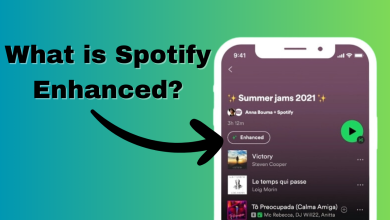15 Easy Solutions to Fix Spotify Not Playing Songs [Guide]
- Spotify may not play songs due to software bugs, poor internet connection, or corrupted files.
- Check Spotify's status, your internet connection, and your account status. Restart the Spotify app, log back in, and check your device's storage.
- Ensure Spotify isn't in offline mode, resync downloads, check firewall settings, clear app cache, adjust settings like crossfade, hardware acceleration, and streaming quality. Update or reinstall the app if needed.
Imagine you are jamming to your favorite songs and suddenly the music stops, ruining your listening flow. Although Spotify is one of the most popular music apps for listeners with more than 500 million users it still isn’t free from bugs and errors.
The Spotify not playing songs issue can be frustrating but the good news is that multiple steps can help you get things sorted. In this article, we will be exploring 15 steps starting with the easiest options and ending with a bit more complex ones. So let’s jump in!
Table of Contents
- Causes Behind Spotify Not Playing Songs
- How to Fix Spotify Not Playing Songs
- 1. Check Spotify Status
- 2. Check Your Internet Connection
- 3. Check Your Account Status
- 4. Restart the Spotify App
- 5. Log Back In
- 6. Check Your Storage
- 7. Make Sure Spotify Isn’t Running on Offline Mode
- 8. Resync Your Spotify Downloads
- 9. Check Your Firewall Settings
- 10. Clear App Cache
- 11. Turn Off Crossfade Songs
- 12. Disable Hardware Acceleration
- 13. Turn off High-Quality Streaming
- 14. Check for Spotify Updates
- 15. Reinstall the Spotify App
- Conclusion
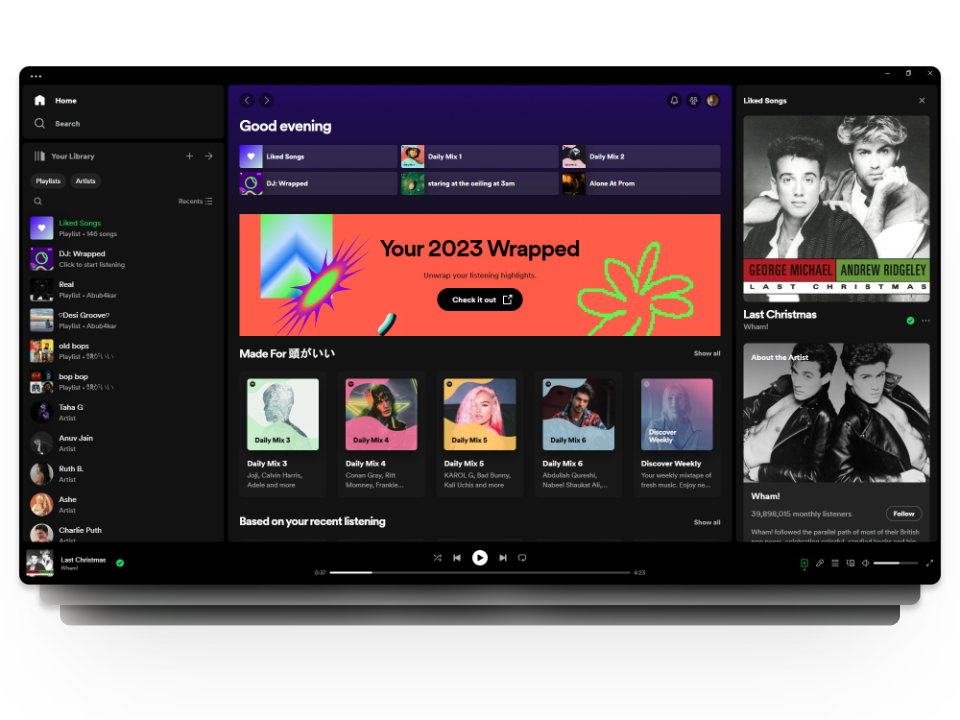
Causes Behind Spotify Not Playing Songs
There are many possible causes for the Spotify not playing songs issue but it’s important to remember that this is simply a random bug that if you are lucky can be fixed by simply relaunching the Spotify app. Apart from that, here are a few other reasons for Spotify not playing songs:
- Software Bugs: If your Spotify app or device is facing software errors or bugs, it can cause your current song to stop playing.
- Poor Internet Connection: If you have a weak or unstable internet connection then there’s a chance your Spotify will need some time to load your songs.
- Corrupted Files: If your device has a virus, it can mess up your downloaded Spotify songs and stop them from playing correctly.
READ MORE: What is Favorite Music Guru & Should You Use it for Spotify? ➜
How to Fix Spotify Not Playing Songs
Just as there are many causes behind the issue there are several solutions that can help you fix Spotify not playing songs. Let’s jump into 15 solutions to get your Spotify running smoothly again.
1. Check Spotify Status
Before diving deep into this, the first step to fix your problem is to make sure that there aren’t any issues with the Spotify servers. Most of the time Spotify puts updates regarding any issues on their Twitter or X account @SpotifyStatus that you can keep an eye on to make sure the problem isn’t from Spotify’s side. If the issue is due to server problems, then you’ll need to wait until Spotify fixes the song-playing errors.
2. Check Your Internet Connection
Now that we know the issue isn’t from their side, the second step you can take is to ensure your internet connection is performing sufficiently. Although premium users can enjoy internet-free listening non subscribers have to rely on a strong internet connection for uninterrupted listening.
To check your Wi-Fi or cellular connection you can run a speed test using trusted websites like Fast.com or Speedtest by Ookla to have a detailed overview of your internet performance.
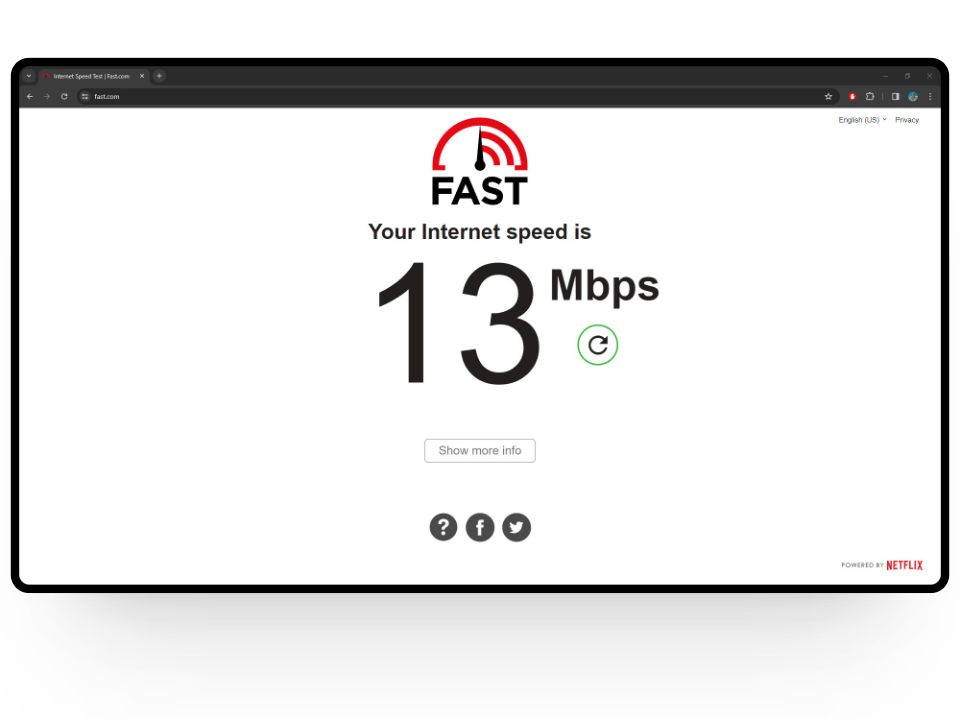
READ MORE: What is Jitter? Decoding The Key to Faster Internet Speeds ➜
3. Check Your Account Status
If you are a premium user, Spotify usually auto-renews your next month’s subscription through your bank account. However, if your account doesn’t have enough money, Spotify will automatically cancel your subscription plan and you’ll need to manually pay your subscription fees.
This can cause Spotify to cause errors and bugs in your account like Spotify not playing songs. So make sure your Spotify account still has access to premium benefits and is eligible for future transactions.
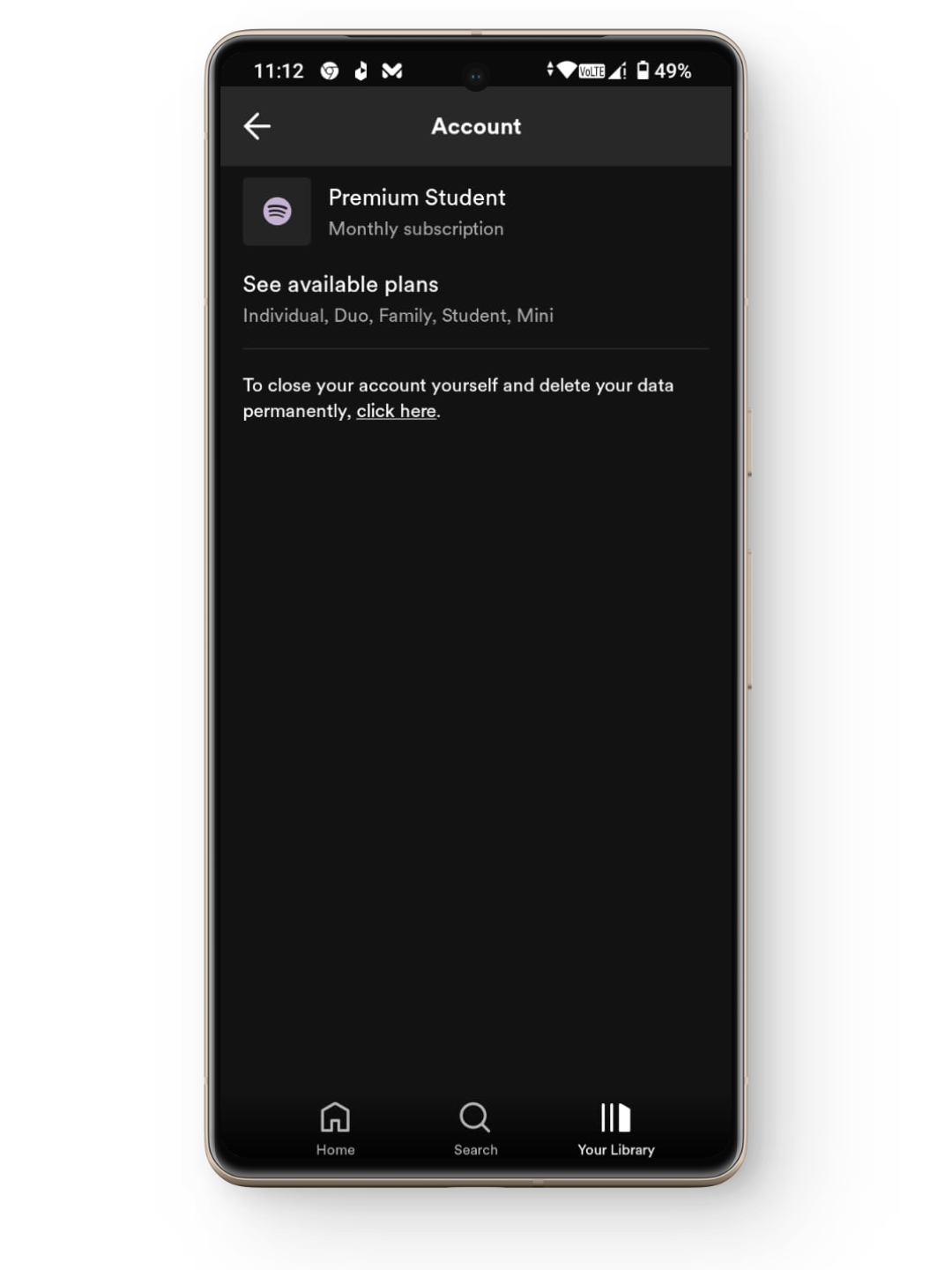
4. Restart the Spotify App
One of the most helpful solutions to pretty much every Spotify error or bug is to give your app a quick restart. Although restarting apps might not sound as helpful they can help you fix random glitches like playback issues.
If you are on a mobile, you can simply close the Spotify app and open it back to see if anything changes. You can also remove it from the background process to add an extra level of assurance. On the other hand, if you are on a PC or Mac and Spotify is allowed to run in the background, see these steps:
READ MORE: Spotify Not Working? – Try these 8 Fixes ➜
↪ Mac Users
- Open up the Apple Menu and click on the Force Quit button.
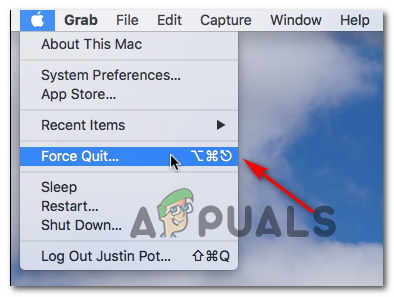
Click on the Force Quit button - Next, select Spotify from the list and click on the Force Quit option to close your Spotify.
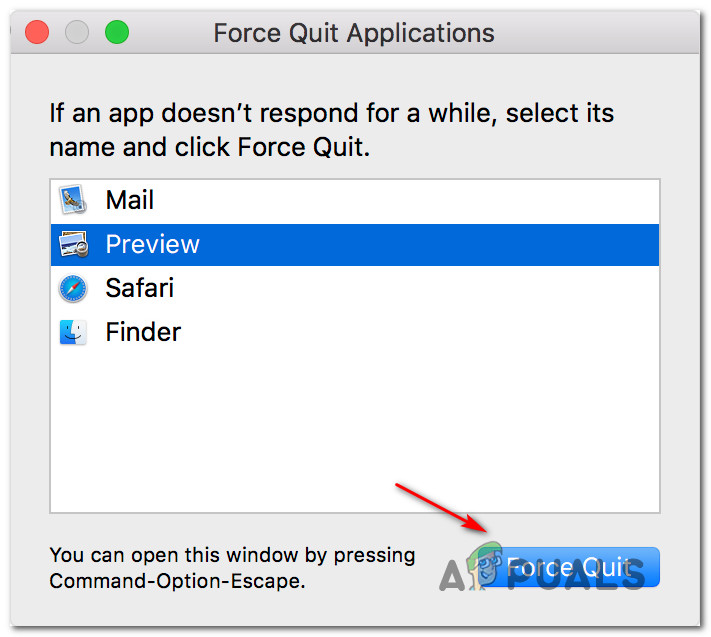
Force Quit apps
↪ Windows Users
- Right-click on the windows icon to open up the quick access menu.

Right-click on the Windows icon - From here, select the Task Manager option.

Select task manager - Now select Spotify in the processes and click on End task to close your Spotify app.

Clear background processes
READ MORE: Fix: Too Many Background Processes on Your Windows PC
5. Log Back In
If you are still facing the same error even after restarting your Spotify app, the next step you can take is to log out and log back into your account. Whether you are on a mobile device or a laptop, you can log out of your account by simply clicking on your profile icon and from there selecting the Log Out option.

Once you are logged out of your account, we recommend giving your app another quick restart before clicking on the Log In button to check if the issue presumes or not.
6. Check Your Storage
Spotify recommends more than 250 MB of free storage and if you go below this, Spotify will not be able to play songs due to insufficient memory. If your device is almost full, we suggest managing and deleting your downloads especially Spotify playlists or other apps and photos.

7. Make Sure Spotify Isn’t Running on Offline Mode
Offline Mode is when Spotify only plays songs that you have downloaded in your library. Although this feature is only limited to premium users it’s still important to make sure that the song you are trying to play is available for offline listening. If it isn’t, you’ll simply need to connect to the internet or switch to a song that is already downloaded.
8. Resync Your Spotify Downloads
If you mainly use Spotify for its offline listening perks, you have to provide an internet connection every 30 days to resync your downloads. If it has been more than 30 days, Spotify won’t be able to play all your offline songs smoothly. Once you have resynced all your Spotify downloads you can now go back to connection-free listening.
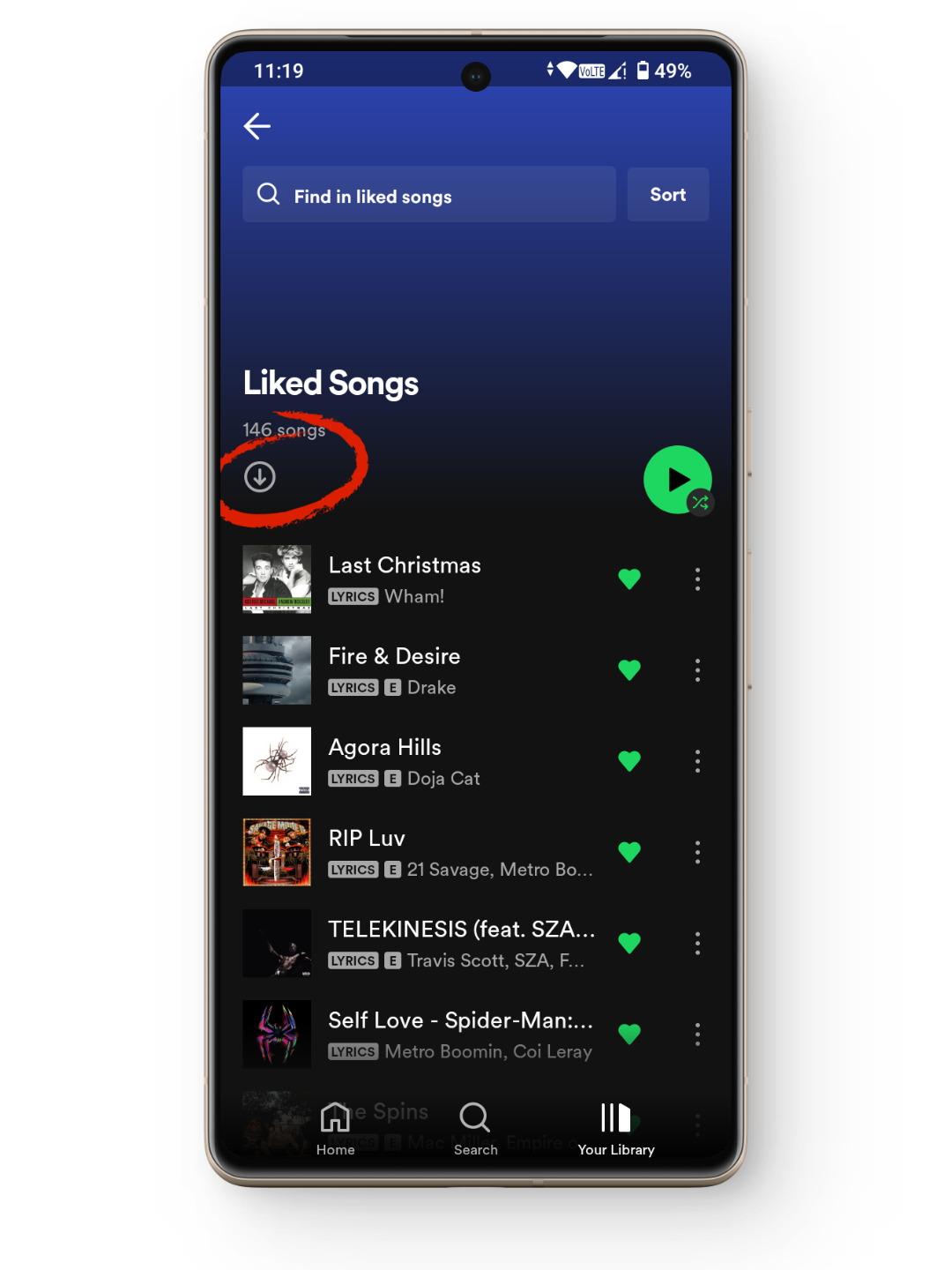
READ MORE: Spotify Desktop and Mobile Not Synced? Try these fixes ➜
9. Check Your Firewall Settings
Firewall configuration involves setting rules to control incoming and outgoing network traffic, and determining which connections are allowed or blocked based on specified criteria.
If you have recently downloaded the Spotify app on your desktop, you should make sure Spotify is allowed to communicate through Windows Defender Firewall by going through a few quick steps:
- Open up your Windows Search Bar and type in “Check firewall status”.

Type in check firewall status - Next, select the “Allow an app or feature through Windows Defender Firewall.”

Select allow apps option - From here, scroll down to Spotify Music and check the boxes next to Private and Public network access as well.

Check boxes for Spotify Music
READ MORE: Fix: “A firewall may be blocking Spotify” Error When Logging into Spotify ➜

10. Clear App Cache
Cache data in simple terms is a collection of files, settings, and images that improve performance and decrease load times. However, it can also cause problems and issues within the Spotify app. So it’s better to regularly clean up your cache data by following these steps:
↪ Mobile App
- Open up your Spotify app and tap on the library button at the bottom.

Tap on the library tab - From here, tap on your profile icon to open a side menu.

Tap on the profile icon - Next, select the Settings and Privacy option.

Tap on settings & privacy - Now, scroll down to the Storage tab and click on the Clear cache button to delete temporary files.

Tap on clear cache
↪ Desktop App
- Open up your Spotify app and click on your profile icon.

Click on your profile icon - From here, click on the Settings option.

Click on the settings option - Finally, scroll down to the Storage tab and click on the Clear cache button to free up unnecessary data.

Select your audio quality
READ MORE: Clearing Cache in Android: What, Why and How? ➜
11. Turn Off Crossfade Songs
Spotify Crossfade is a feature that ensures smoother transitions between songs to ensure seamless listening. However, it can also result in errors and slight lags when playing songs. To turn off Crossfade songs, you’ll need to follow these steps:
- Open up your Spotify app and head over to the Settings tab.

Head to settings - From here, scroll down to Playback settings, and next to the Crossfade songs toggle off the button.

Toggle off crossfade songs
12. Disable Hardware Acceleration
Hardware acceleration is a feature that makes use of your computer’s hardware like your graphics processor, sound card, and other components to provide better streaming performance. Although the feature is aimed at delivering up-to-the-mark music quality, it can sometimes cause songs to skip, stutter, or not play at all.
Usually, the feature is enabled by default and is only available to Desktop users who can disable it by following these steps:
- Open up your Spotify app and click on the three dots at the top left corner to open up the Menu.

Click on the three dots - From here, hover over to the View tab and click on Hardware Acceleration.

Disable hardware acceleration - A confirmation window will appear with a few details. Simply give it a quick read and click on OK for the setting to take effect.

Press the OK button
READ MORE: Disable or Enable Hardware Acceleration in Web Browers ➜
13. Turn off High-Quality Streaming
Spotify allows its premium users to have full control over their music quality. This means that if you are low on cellular data and want to save it you can change your streaming quality from Very High to Normal or even Low. However, sometimes this can also cause playback issues and might be the reason behind Spotify not playing songs.
Here’s how to turn off high-quality streaming on the Spotify mobile and desktop app:
↪ On Mobile
- Open up the Spotify app and head to the Settings tab.
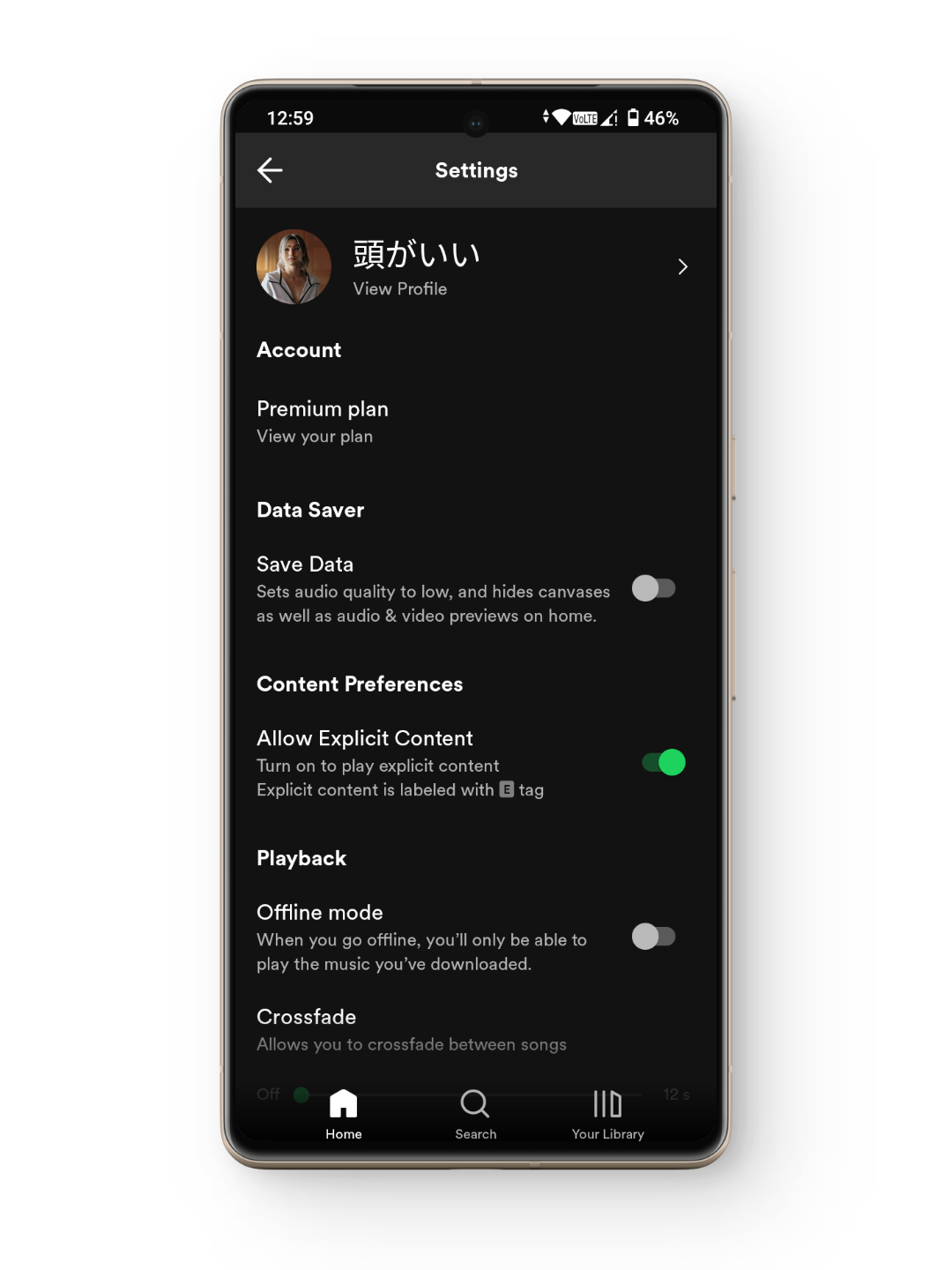
Head over to settings - Under the Audio Quality tab next to the WiFi streaming option select something less than very high or high if you are a free Spotify user.

Adjust music quality
↪ On Desktop
- Open up the Spotify app and click on your profile icon.

Click on your profile icon - Now, click on the Settings tab.

Head over to settings - Look for the Audio Quality option and here next to the Streaming quality change it to something below Very High.
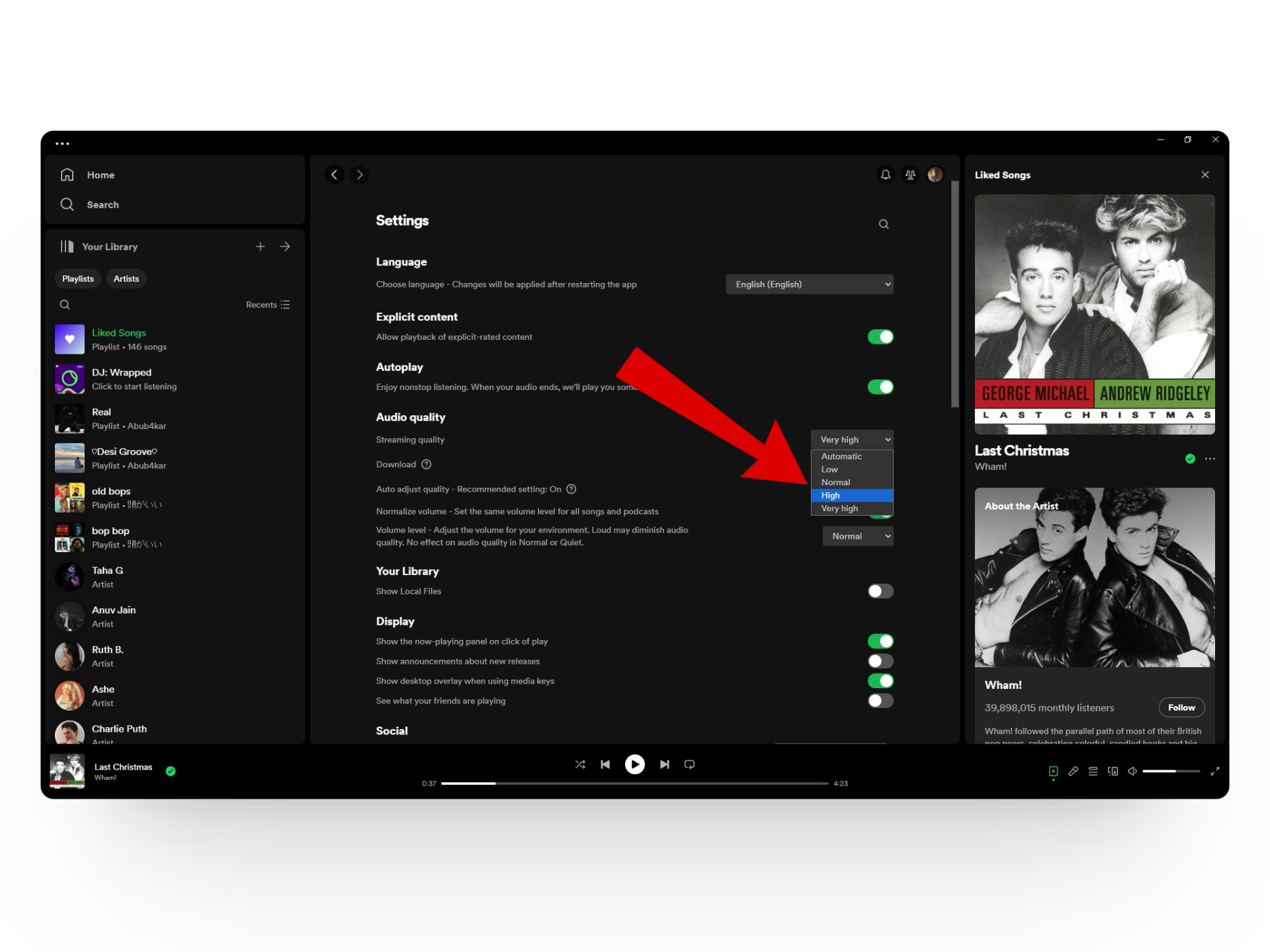
Adjust music quality
14. Check for Spotify Updates
One of the final steps you can take is to make sure that your Spotify is up to date and running the newest version. We also recommend turning on automatic updates to avoid any delays for future updates.
READ MORE: How To Disable Automatic Updates On Windows 11 ➜
15. Reinstall the Spotify App
Finally, if none of the above steps have helped you solve your issue, the last thing you can do is reinstall the Spotify app on your device. Reinstalling the app will take it through several other fixes in one go such as restarting, logging back in, clearing cache, and more.
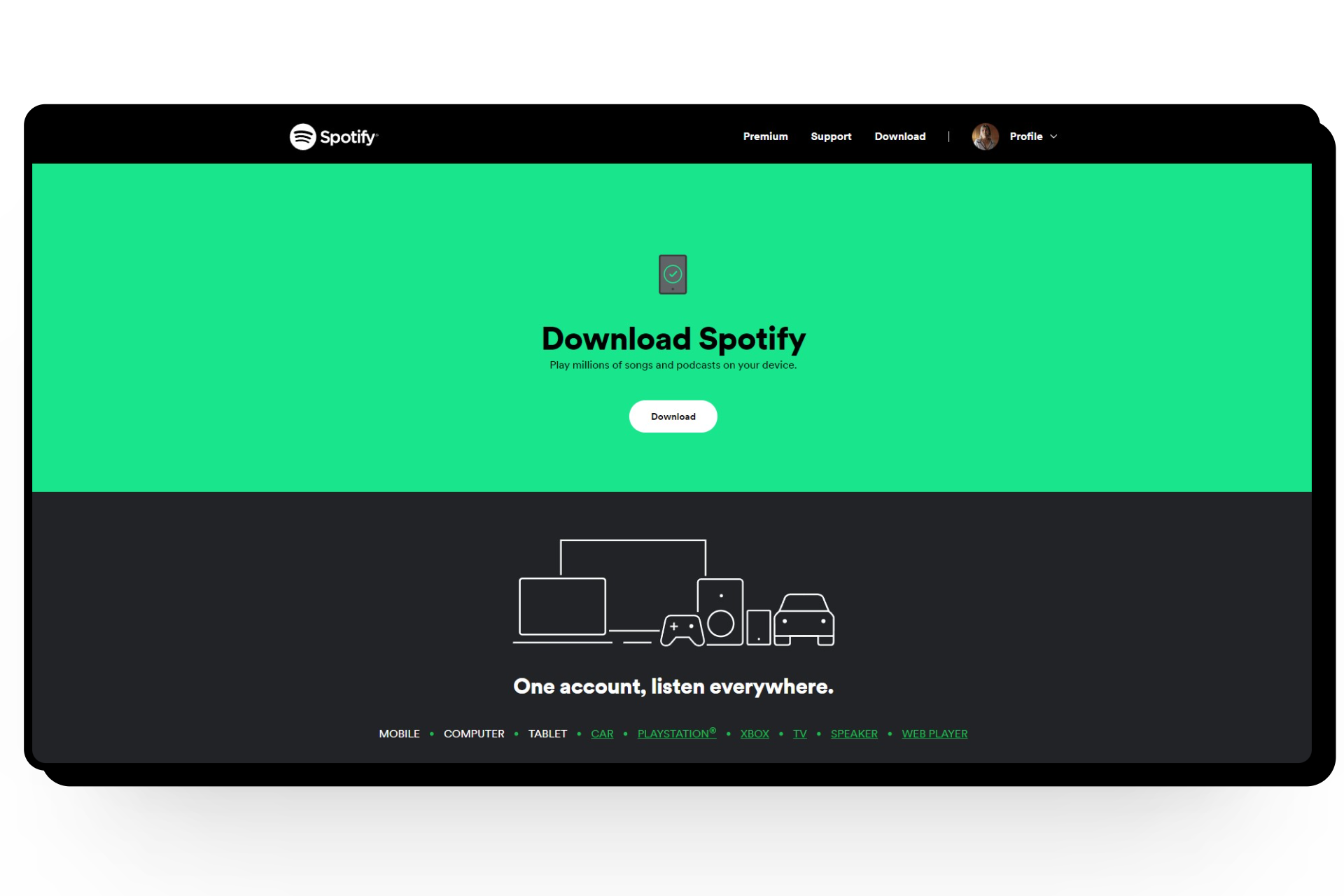
READ MORE: How to Make a Spotify Blend & Manage It Easily [3 Ways] ➜
Conclusion
Spotify not playing songs can be a major turn-off for a lot of music listeners as it interrupts their music sessions and forces them to take measures to solve it. However, after going through the 15 solutions mentioned above we guarantee that your problem should be fixed by giving a few of these a shot.
FAQs
To create a Spotify Blend playlist, navigate to the Library tab, Search bar, or Browse All section within the Spotify app. From there, you can initiate the playlist creation process and invite friends to join in the collaborative music experience.
Deleting a playlist on Spotify is a straightforward process. Tap and hold on the playlist you wish to remove, and a menu of options will appear. From this menu, select “Delete playlist,” and confirm your decision by tapping “Delete” in the subsequent prompt.
Clearing the queue on Spotify is a simple task. While a song is playing, tap the “Queue” icon to view the upcoming songs. Then, tap “Clear” to remove all the songs from the queue and start fresh.




